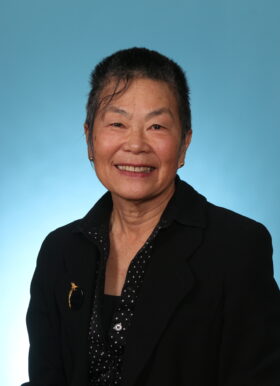
Research
Glaucoma and Ocular Hypertension (Biostatistics)
Dr. Gordon is an expert in the design, analysis and conduct of randomized trials and observational studies. She is PI, Coordinating Center, the “Ocular Hypertension Treatment Study” (OHTS), a multi-center NIH treatment trial of ocular hypertension. The study was awarded the New York Academy of Medicine prize and the International Glaucoma Society Award. The primary outcome paper was in the top 10% most cited publications in clinical medicine per SCOPUS. Members of the American Glaucoma Society ranked OHTS as having the highest impact of 8 multi-center trials conducted in the past 25 years. Gordon and colleagues (2002) were first to provide definitive evidence that central corneal thickness was a risk factor for glaucoma. These results provided the justification of a CTP 1 code and its inclusion in preferred practice plans of glaucoma world-wide. Gordon and colleagues (2002) developed an accurate prediction model from OHTS to estimate a patient’s 5-year risk of developing glaucoma and validated the model in an independent European sample of over 1,000 patients (2007). She is PI of the 20-year follow-up study of participants in the Ocular Hypertension Treatment Study.
Dr. Gordon was PI, Coordinating Center, The Collaborative Longitudinal Evaluation of Keratoconus Study, the first multi-center study funded by the NIH in Optometry. Dr. Gordon developed new outcome measures such as the validated corneal scarring grading system in Keratoconus, Glaucoma Symptom Questionnaire and Pediatric Cerebral Palsy Visual Function Questionnaire. Her studies on patient adherence to glaucoma medication using an unobtrusive electronic eye drop monitor are still considered “landmark” studies. She is PI of the NIH funded, multi-center clinical trial planning grant, “Reducing Adenoviral Patient-Infected Days.”
Dr. Gordon’s K-23 trainee Dr. Bhorade article in JAMA Ophthalmology (2013) reporting that visual acuity measured in the doctor’s office was 2 lines better than acuity measured in the patient’s home received an editorial comment and national press coverage. This study is notable for measuring patient function in the home-an emerging national research priority.
Dr. Gordon has served on numerous Data and Safety Monitoring committees including the LOVIT I and II (Veterans Administration), Beaver Dam Eye Study, the Baltimore Eye Study and The Prism Adaptation Randomized Trial. She has been a member of the National Advisory Eye Council (2006-2010) and the NIH Council of Councils (2009-2012).
Education
- BA, – Portland State University, Portland, Oregon, 1966
- MS, (Sociology), University of Wisconsin-Madison, Madison, Wisconsin, 1969
- PhD, (Sociology, Psychometrics) – University of Wisconsin-Madison, Madison, Wisconsin, 1979
Honors
- Japanese-American Citizens League Award, 1962
- State of Oregon Scholarship Award, 1962
- Fellowship, National Training Laboratory Workshop, 1964
- John Francis Cramer Student Activities Award, 1965
- U.S. Representative to Japanese-American Student, Conference, Tokyo, Japan, 1965